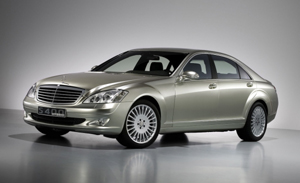What Is An Electric Car?
An electric car is powered by an electric motor instead of a gasoline engine. The electric motor gets energy from a controller, which regulates the amount of power—based on the driver’s use of an accelerator pedal. The electric car (also known as electric vehicle or EV) uses energy stored in its rechargeable batteries, which are recharged by common household electricity.

With the all-electric Leaf, Nissan is taking the lead in pure electric cars in the United States. The Nissan Leaf is a medium-size all-electric hatchback that seats five adults and has a range of 100 miles. The company is hinting at a price around $30,000. It will begin to roll out in select cities in late 2010.
Unlike a hybrid car—which is fueled by gasoline and uses a battery and motor to improve efficiency—an electric car is powered exclusively by electricity. Historically, EVs have not been widely adopted because of limited driving range before needing to be recharged, long recharging times, and a lack of commitment by automakers to produce and market electric cars that have all the creature comforts of gas-powered cars. That’s changing. As battery technology improves—simultaneously increasing energy storage and reducing cost—major automakers are expected to begin introducing a new generation of electric cars.
Electric cars produce no tailpipe emissions, reduce our dependency on oil, and are cheaper to operate. Of course, the process of producing the electricity moves the emissions further upstream to the utility company’s smokestack—but even dirty electricity used in electric cars usually reduces our collective carbon footprint.

Another factor is convenience: In one trip to the gas station, you can pump 330 kilowatt-hours of energy into a 10-gallon tank. It would take about 9 days to get the same amount of energy from household electric current. Fortunately, it takes hours and not days to recharge an electric car, because it's much more efficient. Speaking of convenience, let's not forget two important points: charging up at home means never going to a gas station—and electric cars require almost none of the maintenance, like oil changes and emissions checks, that internal combustion cars require.
Electric motors develop their highest torque from zero rpms—meaning fast (and silent) zero-to-60 acceleration times.
Note: In the illustration, we show the relative features of electric cars and gas-powered cars. However, it doesn't have to be an "either-or" situation. Plug-in hybrids offer many of the benefits of electric cars while mitigating most of the drawbacks, such as limited driving range.





